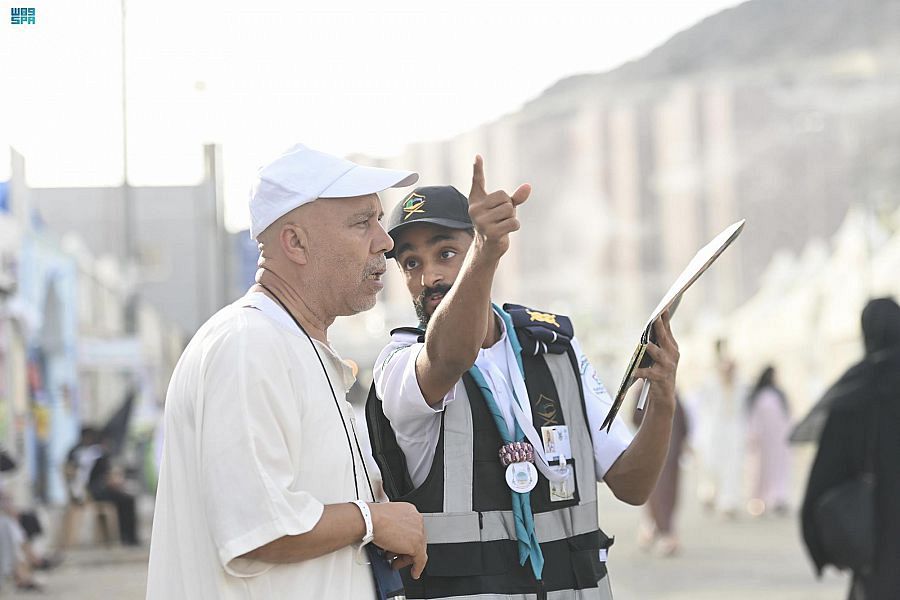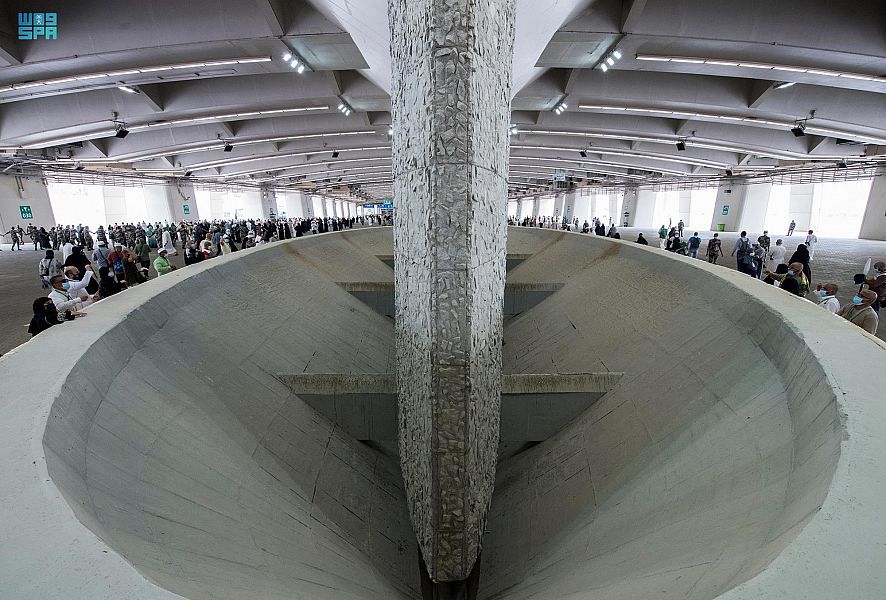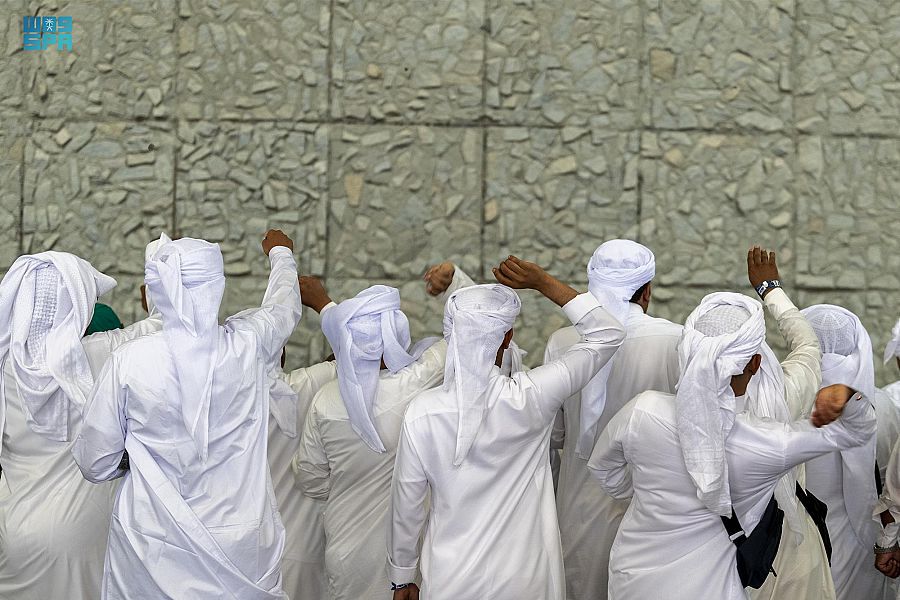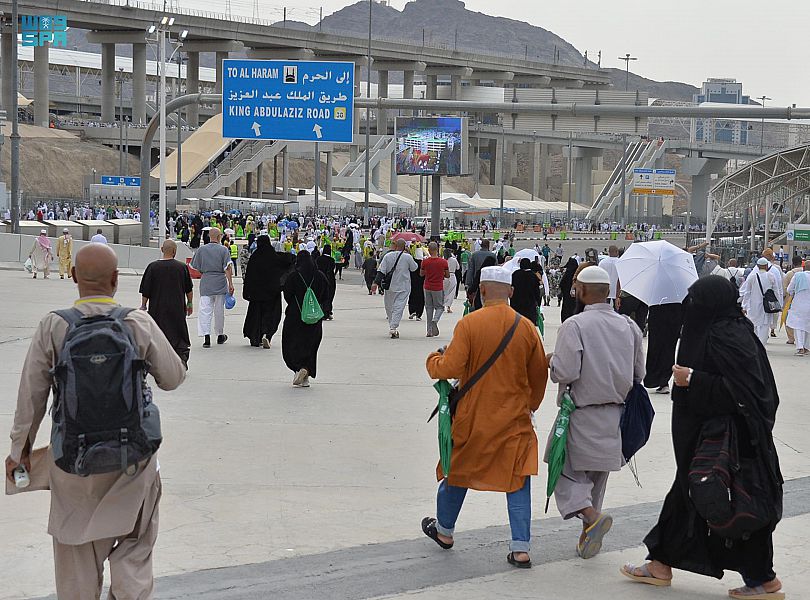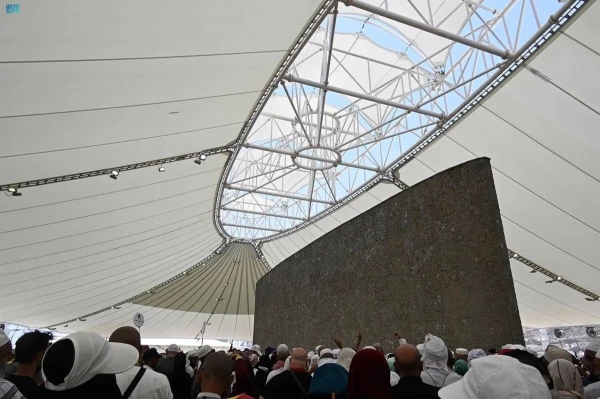
Hajj pilgrims continued performing the stoning ritual in an orderly and smooth manner on the second day on Thursday. They hurled pebbles at all three Jamarat or pillars symbolizing Satan, on Thursday, which is the first day of Tashreeq and the fourth day of the annual pilgrimage of Hajj.
Pilgrims moved in batches in their allotted time for performing the ritual and upon their arrival at the Jamarat, chanting “Allahu Akbar” (God is the greatest), they stoned first at Jamarat Al-Sugra (small pillar), then at Jamarat Al-Wusta (medium pillar) and lastly at Jamarat Al-Aqaba (largest pillar) seven times each.
The pilgrims moved easily and comfortably from one pillar to the next as they hurled pebbles at the pillars. Multiple lanes were allocated for the smooth movement of pilgrims to the multi-level Jamarat Bridge complex. They prayed after stoning the first two pillars and quit quickly after stoning at the third Jamarat, following the tradition of the Prophet (peace be upon him).
More than 1.8 million pilgrims hailing from over150 nationalities proceeded from their camps in Mina to the Jamarat Complex on their scheduled time on Thursday afternoon. Pilgrims reached the Jamarat on board Mashair Train and buses while pilgrims staying in tents located near the Jamarat walked on foot to the facility.
The ritual began on Wednesday by stoning only at Jamarat Al-Aqaba. A huge contingent of security forces and health workers were deployed at the Jamarat Complex to ensure the safety and health of the pilgrims as well as their smooth conduct of the stoning ritual.
Stoning at Jamarat is the most repeated ritual of the Hajj. Pilgrims perform the ritual at one Jamarat (Jamarat Al-Aqaba) on the first day of stoning on the Day of Sacrifice, Dhul Hijjah 10. In the next two or three days, they hurl seven stones each at the three pillars. The five-level Jamarat Complex structure around the three stoning sites allows for a smooth flow of pilgrims who are only permitted to move in one direction throughout the area to prevent congestion.
After performing four main rituals of stoning, sacrificing animals, shaving or cutting hair and performing Tawaf Al-Ifadah and Sai’ on Wednesday and Thursday, pilgrims returned to their accommodation in Mina.
After Thursday’s ritual of stoning, they will spend the rest of the time in prayers and supplications in their tents, and the five-six day rituals of Hajj will come to a close after performing stoning rituals at Jamarat on Friday or Saturday afternoon.
Tashreeq and Adahi project
The first of the three days of tashreeq comes on Dhul Hijjah 11 (Thursday) and ends with sunset on Dhul Hijjah 13 (Saturday). The strongest opinion on why they are called Ayyam Al-Tashreeq or the days of tashreeq is because prior to the invention of the refrigeration system, the pilgrims used to slice the meat they acquired after the sacrifice, season it with salt and then let it dry in the sun in an early and traditional style of food preservation.
The dehydrating of the meat allowed the pilgrims to preserve it and carry it with them on their long journey back from wherever they came. This process in itself is called tashreeq, and it was derived from the Arabic word which means sunrise or sunshine. The process entails the exposure of the meat to the sun for a long time.
After the advent of refrigeration devices that freeze meat and preserve it from rotting, the custom of roasting sacrificial meat disappeared in Mina, at a time when Saudi Arabia project was launched to benefit from sacrificial meat and eliminated indiscriminate slaughter.
The Saudi Project for the Utilization of Sacrificial Animals (Adahi) has the largest facilities and operational capabilities in the world, with a completion rate that is the highest in the world. The project was established in 1403AH, corresponding to 1983, and the task of implementing the project was entrusted to the Islamic Development Bank, as the project aims to facilitate the pilgrims to perform the rituals of sacrifice. The meat is distributed among the poor people in Makkah and the refrigerated surplus quantity is transferred to the beneficiaries in about 27 Muslim countries around the world.





